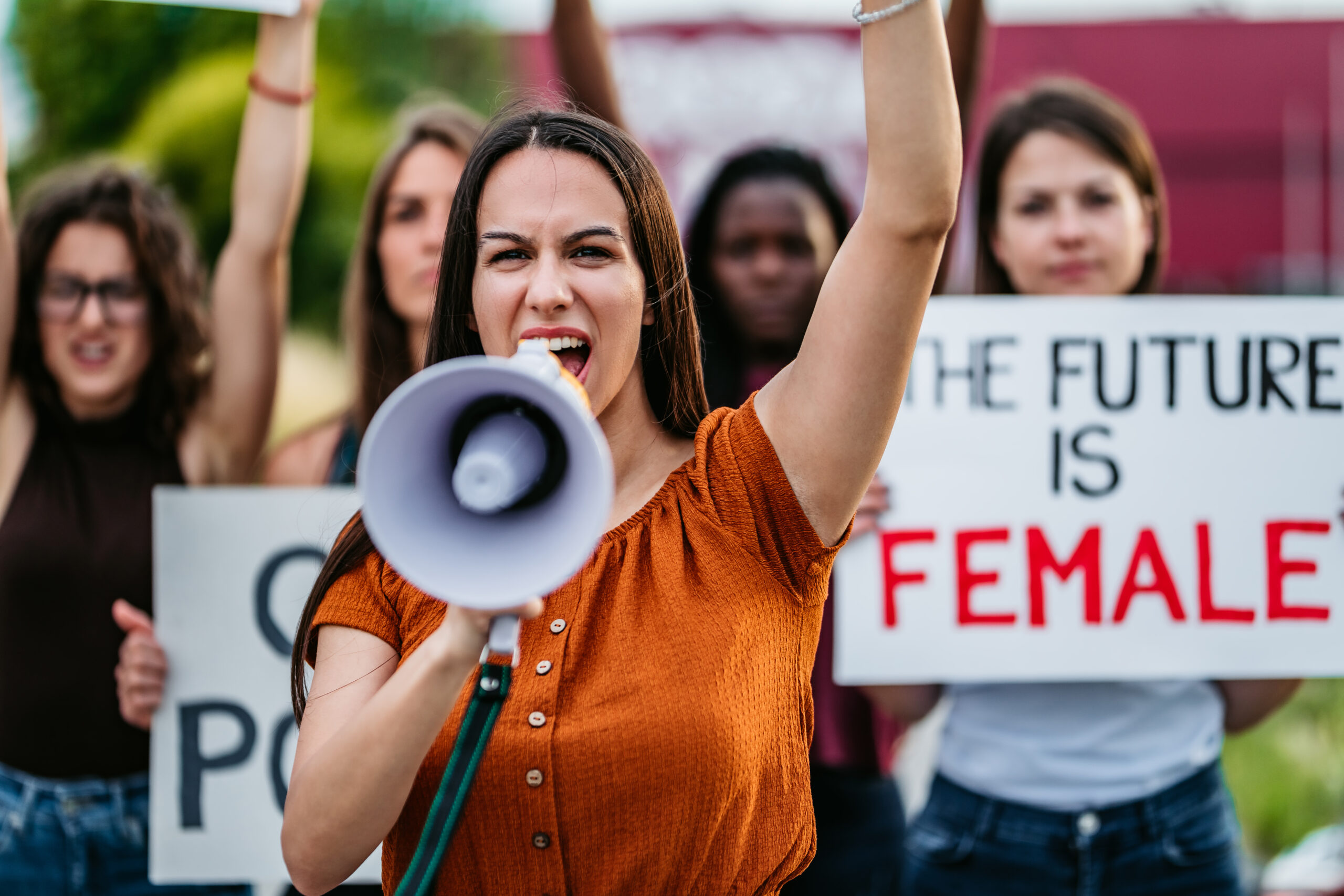Women's Leftward March
The political polarization of marriage prospects is a female problem.

Political polarization is taking its toll on marriage rates, according to a new study by Lyman Stone and Brad Wilcox published in The Atlantic over the weekend. Young, single men have been moving to the right, while young, single women move left. For approximately half of ideologically minded young singles, they conclude, there is little hope of finding a partner who shares their politics.
It’s a depressing data set, but it is also not surprising. Marriage has always held large political significance, even if the act of sex and its significance for one’s identity has not until recently; it is natural that we should want to spend the rest of our lives with someone who agrees with us at least on the fundamentals. A few decades ago, this could be true of a couple in which the wife was a Democrat and the husband a Republican. It is not true today.
But what we might rightly surmise is that the more notable shift here is not that of political polarization—though that is undoubtedly real and growing—but of the highly gendered nature of this polarization. In short, more than any other identity group one belongs to, sex, it seems, determines voting patterns.
This has not always been the case. For most of history prior to the 20th century, male and female interests were integrated in some form or another, whether under a patriarchal household, a tribe, a marriage, or some similar arrangement. This household formed the smallest unit of political power, representing, more or less, the interests of both sexes against the powers of the state. (The feminists will take issue with this description, but I refer them to the reasoning of the anti-suffragettes, who believed women voting would actually hurt female representation in politics.) Today, we see something quite different: Men and women, duty-bound to the state first and then to one another, have become political enemies. Indeed, as Stone and Wilcox show, they are increasingly inclined to be at each other’s throats.
Our political polarization, then, mirrors our sex problems almost perfectly. And, not only are these divisions growing along sexed lines, but they are growing much faster on one side than on the other.
The authors write that the share of “distinctly conservative” men (excluding moderates) has grown from 10 percent of single males to 15 percent since the 1980s; distinctly liberal men in the same category have held steady at 18 percent.
Single women have moved much faster:
As for single young women, the share identifying as liberal surged from about 15 percent in the early 1980s to 32 percent in the 2020s. (Correspondingly, the share of conservative single women declined from 10 percent to about 7 percent over the same period.) Most of this change has happened since 2010 (emphasis mine). In short, the past decade has seen single young men shift slightly to the right and single young women move markedly left, which means that the ideological divide between the sexes is growing.
The ideological divide between the sexes is, overwhelmingly, a female event.
There is a simple and oft-invoked reason for women to align with the political left: Women are empathetic. They are compassionate. And as such, they are often more attuned to the plight of those in the lowest classes of society. Women are also, generally, the more cautious of the two sexes, and the more delicate. That in politics they would prefer the arrangement which affords citizens less choice but more security is therefore unsurprising.
Subscribe Today
Get daily emails in your inbox
But beyond this is another factor more particular to America in the 21st century which may be playing a role. It is by now no secret that American universities have almost entirely flipped their once all-male classrooms. In the last several years, women have first outranked and then outright dominated men in college acceptance and attendance, in grade point average, in extra-curricular leadership, and in post-graduate job acceptance. Women now compose 60 percent of all college students in America, while men account for 71 percent of the decline in college attendance. The Wall Street Journal’s reporting on this trend in 2021 was not so much an exposé as it was a confirmation of a reality that could no longer escape notice. And, as further studies have shown, this shift had less to do with comparative intelligence as it did institutional priorities.
As the university has gone female, it has also gone left. This was the conclusion of a study by Bo Winegard and Cory Clark, a woman with a Ph.D. in social psychology, in their analysis of the changing sex composition of higher education, published in Quillette magazine last year. As broader phenomena, wokeness, "Diversity, Equity, and Inclusion," and ever-narrowing boundaries around acceptable speech have traced the same trajectory as the feminizing of higher education. Women themselves express placing higher value on inclusion than objective truth (males express exactly the opposite), which is why Winegard and Clark called recent trends in higher education “precisely what one would expect as women’s representation in academia grows.” If the future is female, the future is also both left-wing and, adding Stone and Wilcox’s data into the mix, post-familial.
As with the problem, so also with the solution. A world in which marriage rates, not to mention political polarization, do not continue on their warpath, is a world which requires a radical course correction from American women in particular. This may be an unpopular idea among women today, but we can say with certainty that it will only become more so tomorrow.